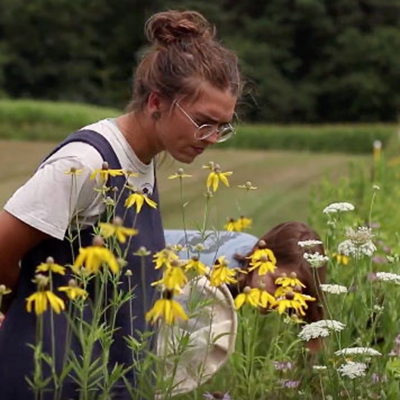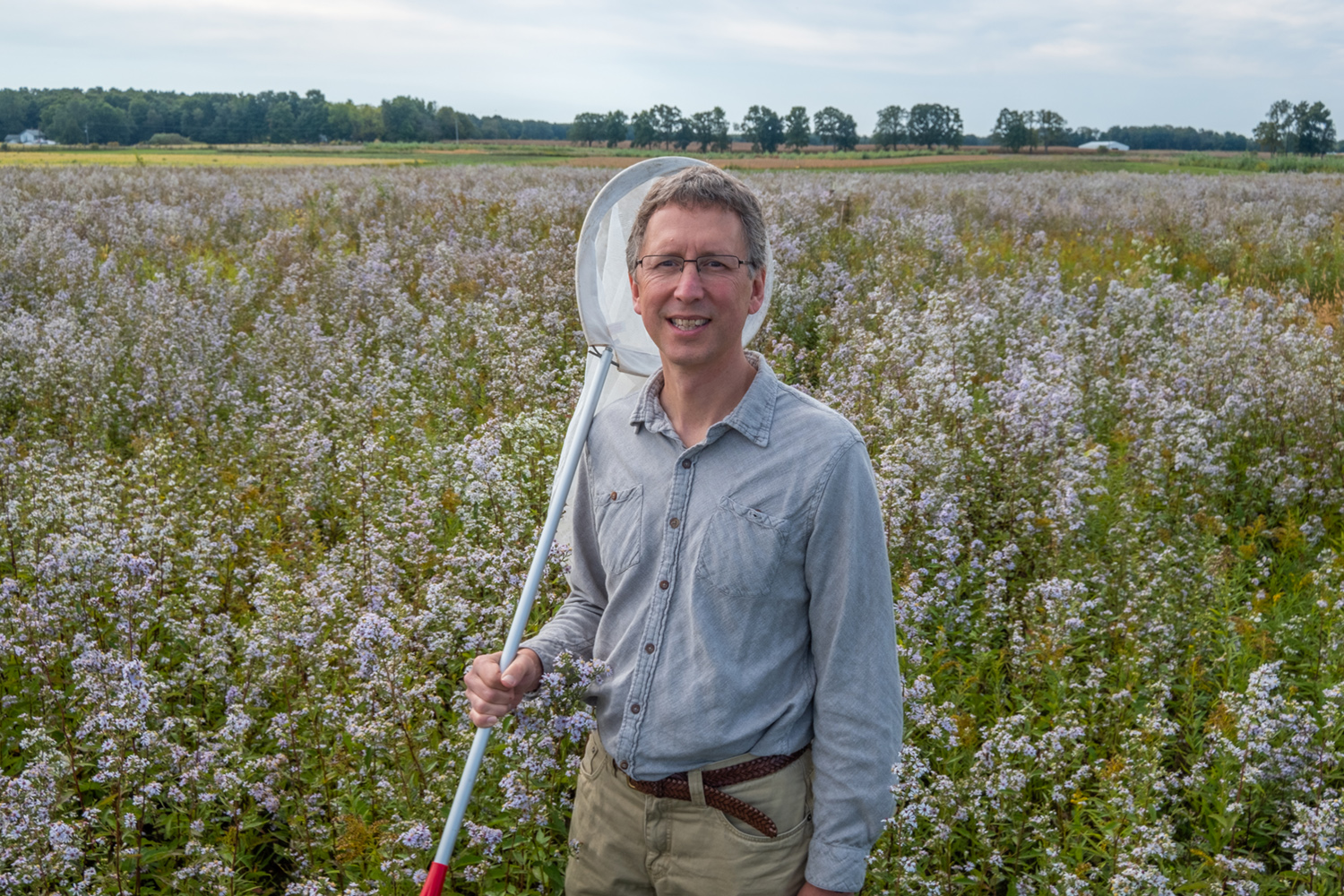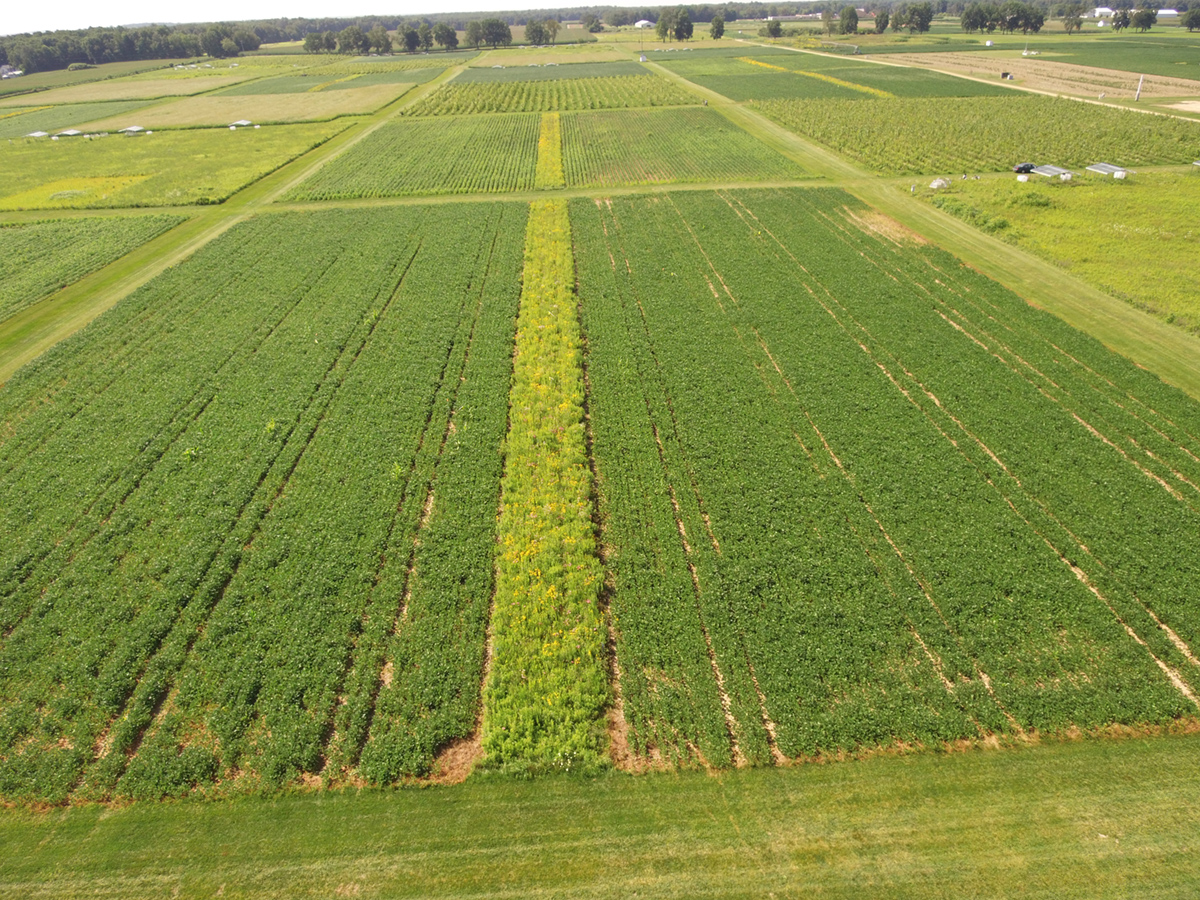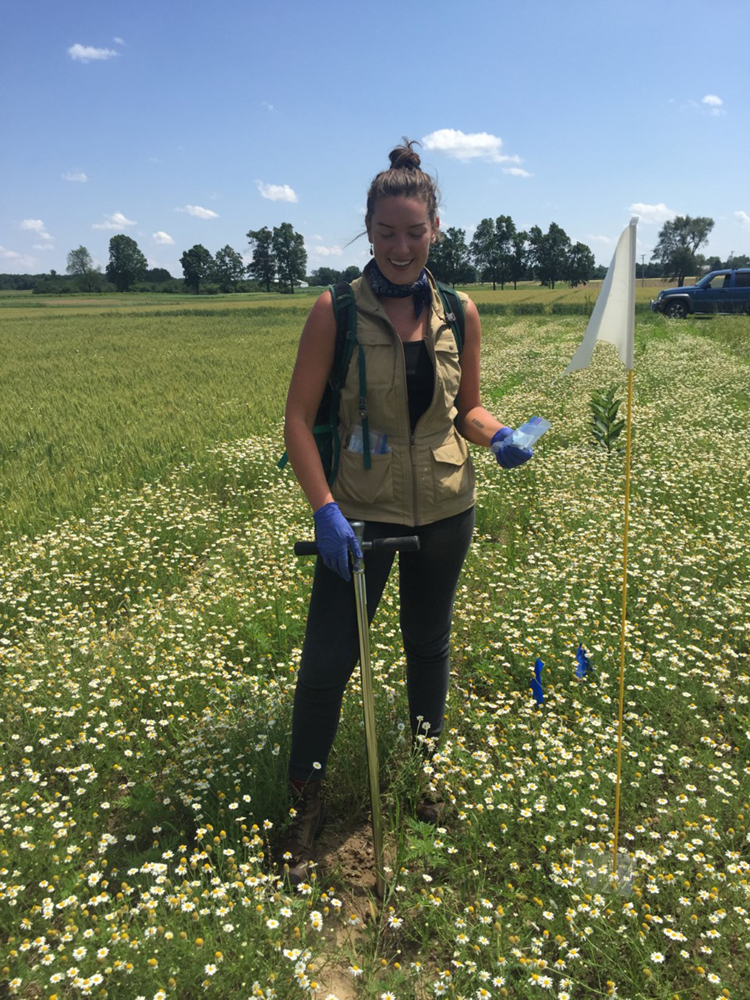The world is facing two huge, interconnected challenges. We need to feed the planet’s population, and at the same time, the way we grow our food is helping fuel the loss of the planet’s natural biodiversity.
But addressing one challenge need not come at the expense of the other. In fact, new research from Michigan State University is showing that bringing a little prairie back to farms in Michigan and other parts of the Midwest could help preserve both biodiversity and crop yields.
“The goal is to do both simultaneously in the vast area planted in row crops,” said Lindsey Kemmerling, the first author of the MSU-led study published May 10 in the journal Frontiers in Ecology and Evolution. “We need to make this land habitable for species and for the ecosystem services the increased biodiversity can provide to the farms.”
Kemmerling earned her doctorate while working on the project in the lab of Nick Haddad, a professor at MSU’s W.K. Kellogg Biological Station in the College of Natural Science’s Department of Integrative Biology and in the Ecology, Evolution and Behavior program.
Haddad, Kemmerling and their colleagues studied a variety of current farmland management practices with a twist. Working at the W.K. Kellogg Biological Station, or KBS, they selected narrow regions in research fields where, instead of crops, they planted prairie vegetation native to southwest Michigan. These regions grew into what are known as prairie strips, slivers of land that increase biodiversity by attracting native pollinators and other organisms that are less prevalent on developed land.
The team showed that a prairie strip’s flora and fauna brought an array of beneficial “ecosystem services” to the strips and the surrounding farmland. For example, the prairie strips attracted more pollinators and increased pollinator activity near the strips.
When combined with the right field management practices, the array of benefits gained by adding a prairie strip essentially offset the loss of cropland. That is, prairie strips could be implemented without compromising crop yield.
“Prairie strips have broad-ranging effects — including improved soil health and increased biodiversity,” said Haddad, who is also the director of the Long-Term Ecological Research, or LTER, site at KBS. “We were excited to see that the benefits of prairie strips for biodiversity and ecosystems in the strips spilled over into cropland.”
“The most surprising thing to me was how quickly we saw the changes,” said Kemmerling, who is now a postdoctoral research associate at the University of Minnesota. The team measured positive changes within the first year of establishing the prairie strips, and some of those advantages became more pronounced in the experiment’s second year.
“It’s promising to see these changes develop as the prairie strips are maturing,” Kemmerling said. “It’s exciting to think about a few years ahead and how they’ll be performing, I think particularly for biodiversity and for carbon accumulation in the soil.”
Although Kemmerling may no longer be at KBS to watch those changes unfold, rest assured that the plots will have their stewards, continuing a tradition that dates back more than three decades.







